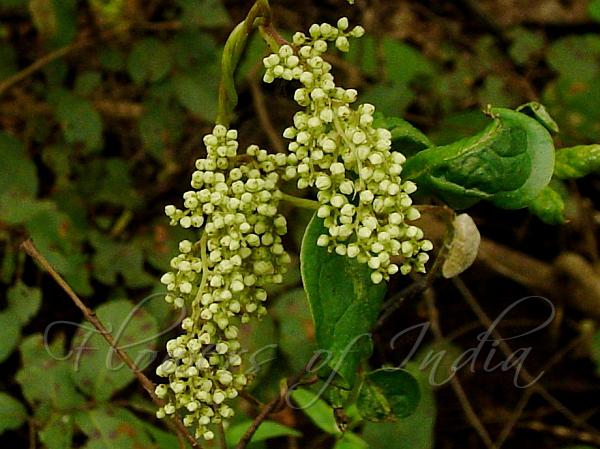|
| Five Leaf Yam |
|

|

| File size | 224581 |
| Original date | 9/21/08 3:39 PM |
| Resolution | 2048 x 1360 |
| Flash | Flash did not fire |
| Focal length | 6.3mm |
| Exposure time | 1/200s |
| Aperture | 3.8 |
| Focus Distance | |
| Metering Mode | Spot |
| Camera make | SONY |
| Camera model | DSC-P52 |
| Sensor type |
|
|
|
|
Photo: |
Botanical name: Dioscorea pentaphylla Family: Dioscoreaceae (Yam family)
Synonyms: Dioscorea triphylla
Synonyms: Dioscorea triphylla
Five Leaf Yam is climbing plant, with compound leaves. Tubers are
irregular, usually long ovoid, transverse section white when fresh,
becoming brown, roots fibrous. Leaves are alternately arranged on the
twining stems. The leaves are palmately divided into 3-5 leaflets, hence
the common name. Male flower spikes occur in panicles up to 50 cm, often
with long, lateral branches. Male flowers are nearly stalkless, bracts are
kidney-shaped, forming an involucre around the flower. Female spikes are
simple or branched, brown hairy. Female flowers have bracts, flowers, and
ovary hairy. Capsule are black at maturity, long ellipsoid, 2-2.5 cm,
thinly leathery, sparsely hairy, wings 0.5--0.6 cm wide. In India, this
yam is common in jungles. Locals dig the tubers to eat. Male flowers are
sold in the bazaars and eaten as greens. Flowering: August-October.
| Identification credit: Dinesh Valke | Photographed near Satara, Maharashtra, Vikarabad, Telangana & Morni Hills, Haryana. |
• Is this flower misidentified? If yes,